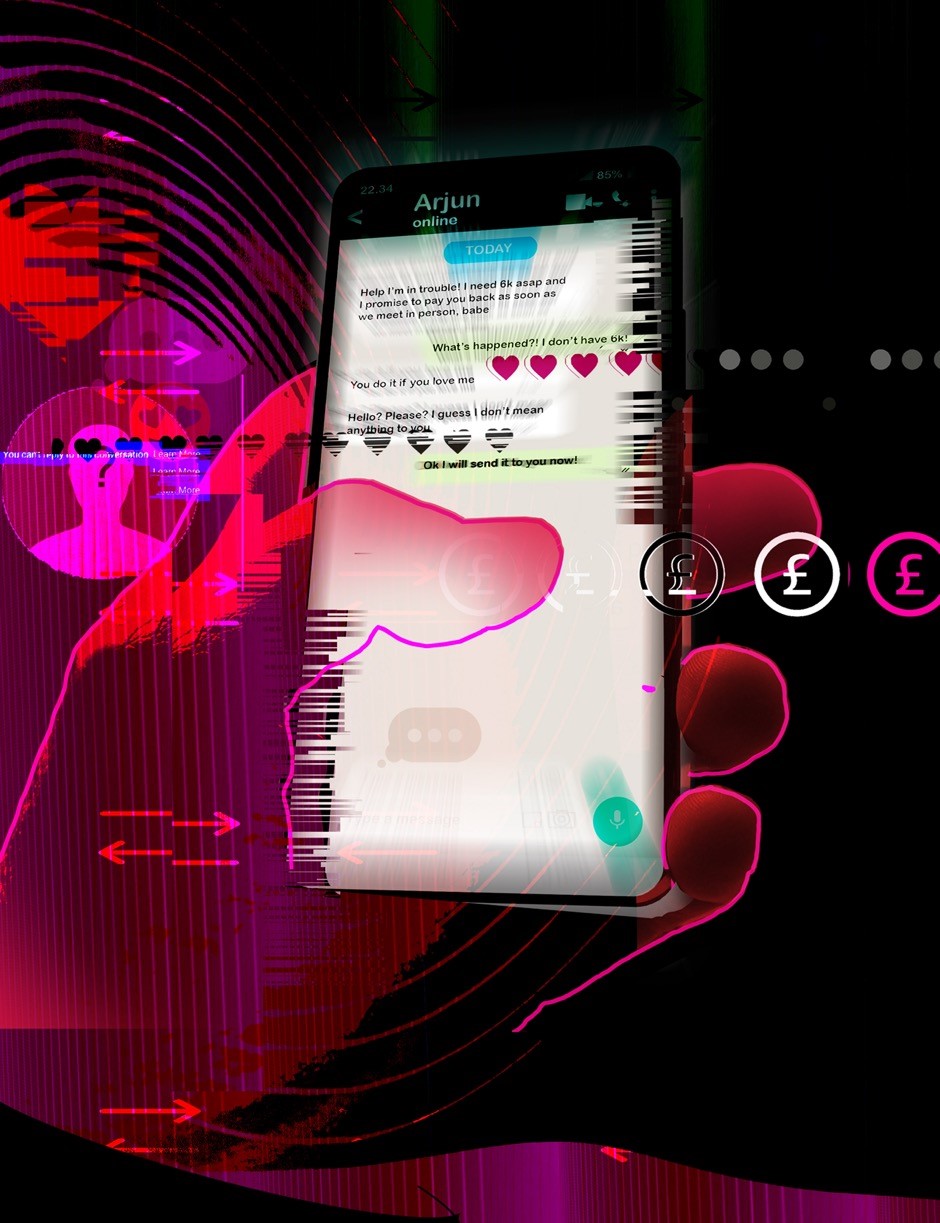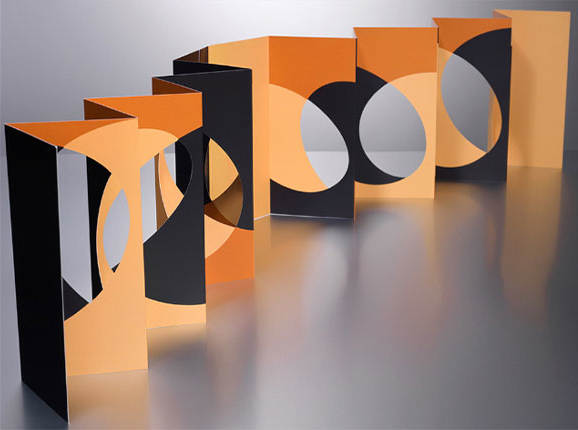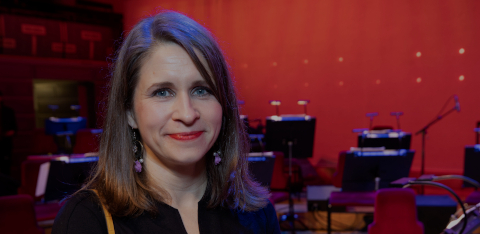Dr Nanette Hoogslag
Staff. Course Leader, MA Illustration

Nanette is Course Leader and Senior Lecturer for our MA Illustration degree, and a practising illustrator and organiser/curator. She is also Principal Editor of the Journal of Illustration.
Who are you and what do you do?
I’m Nanette Hoogslag, Course Leader of the MA Illustration at ARU. I’m also a Senior Lecturer, supervise PhD students, Principal Editor of the Journal of Illustration, and a researcher and illustrator.
Course leading is not just making sure the course runs well, although that’s a large part of my job. It’s also looking at the particular vision of the course and making sure the curriculum matches that vision, that its current and connecting with the students. I also teach two major parts of the course, one module called Design Methods and Context and another called Practice Through Partnership.
What's interesting with illustration is that it’s more than just picture making. It can be an essential or meaningful part in bigger change-making social processes. It’s asking students how they can use illustration, or qualities of illustration and the skills they’ve developed, in new and innovative ways to address all the big questions about how to change this world into a better place. That critical and expansive thinking, that’s where the teaching sits, apart from asking students to make beautiful pictures!
Next to all this, I’m an researcher and illustrator, as well as the Principal Editor of the Journal of Illustration, which is dedicated to research on illustration, particularly from a practitioner’s point of view. That’s really exciting, as it always keeps me at the front end of where illustration is and could be.

What inspired you to get involved with illustration in the first place?
I've always loved making pictures. It's something I did and never really thought about. And then at some point you have to think about what you're going to do with your life, and I thought “I love making pictures, but I want them to have a connection - I need a brief, a message and an audience. I can’t be a fine artist because I’m not sure if I can work on my own. I want to work with and for people.”
I started out with graphic design. In The Netherlands, where I’m from, there’s a very strong design ethos and Dutch Design is a very well-known brand, so I was much more inclined to think as a graphic designer. But gradually I started to understand that picture- and image-making was where my passion lay,
I’m always looking outside the world of illustration for inspiration. I’ve always been interested in artists who weren’t narrowly defined by just crafting beautiful images, however skillful, but looked at all the other ways you can make images and make impactful. "Smart" and meaningful images. For instance illustrators like Christoff Niemann or Saul Steinberg, but equally the collages and assemblages of Robert Rauschenberg, typographic statement by Jenny Holzer, the giant puppets of the Handspring Company, through to the work of the activists artists like The Yesmen. I can get inspiration from people’s self-made messages and crafting or obscure objects and photos full of mysterious stories I find at flea markets.
That's also something in my teaching. I don't ask people to always make pictures, images, or drawings on paper. If they want to make illustrations in three dimensions, use different materials, work interactive or program, or go really experimental, I love that as much as I love people who are traditionally trained and can make a beautiful drawing that can take you to new places.
What was your own path into a career as a professional illustrator?
First I studied graphic design in The Netherlands at the Gerrit Rietveld Academie in Amsterdam, and after that I applied for the MA Illustration at the Royal College of Art, and continued developing my illustration. I went back to the Netherlands and started a practice as an illustration-designer, with many exciting international commissions in the Netherlands and abroad. For instance I had commissions from Deutsche Bank, Financial Times, Heineken, London Transport, New York Stock exchange, Royal Shakespeare Company, Penguin Books, ELLE, Financial Times, New Scientist, Playboy, Sunday Times. I was commissioned by Royal Mail to do the stamps for the Commonwealth Games in 2014.
But I also started to get involved in the questions like “What is the role of illustration?”, “Why do people want pictures?” and “What do they want from a picture?” For a while I curated a page in the Dutch National Broadsheet online edition, where I invited artists of all kinds to respond to the news. This was very exciting and showed me the many ways images can ask questions, have impact or connect. So I went back to the Royal College of Art and did my PhD research on the role of illustration, not just in print, but in the online world.
It wasn’t clear at that point how illustration would work online. On websites and blogs, image and text work differently. There is interaction, sound and movement, but people read differently. On small phones, scrolling, swiping - more selective yet also more superficial. I got really interested in what people, those that commission and those that read, wanted from a picture. With the way images are changing and the way we change in our use of them, are we asking students the right questions, educating them in the right way? How do pictures work? That’s always been my question.

What’s the most valuable thing you took away from education?
The Art school is a place that takes artistic and creative expression seriously, and here we're going to help you not only develop your work, but also help you think about what art and design is and can do. What you can do with those art and design skills and passions.
So this is a place where you’re given time, and people are willing to really argue over what art and design is and help you develop your work and position, that's gold. The most valuable thing I got was space and time and people who believe in the value of this thing called art and illustration.
Another valuable thing I took from art school is the network of people I found there, their belief in the work, and that you can do many things with it. You also learn to think much more innovatively. You learn to think in exploration. You learn to take curiosity seriously, and to look at the world as a place of possibilities. I think we really need that.
What piece of advice would you give to your younger self?
See how valuable and special an opportunity to study is. To have a space where you can just focus on your own development, being able to make mistakes and discoveries. Don’t be in a hurry, but please use it for all it offers, for all the potential and opportunities.
I often find it sad that I was so worried about whether I was good enough, or if I fitted in. All those things you have as a young person, the insecurities, the anxieties you have around stuff that doesn't matter really.
When I see some students now worried about “How is this useful?” or “can I find a job with this ?”, to see them just wanting to be trained in a set of skills, I want to tell them to stop and think about the opportunities they are wasting, go broad and deep, try out something unknown - who knows…? It's true, you need to make a living, but also allow yourself to just develop. You might be more than you think you are. I wish I had been more like that.
I think a lot of students feel everything has to be right in the first attempt. Even if I say “Well, I don’t know what is right. Just play, be curious, What’s the worst that can happen?”

What have you learned about Cambridge that other people might not know?
Cambridge, with its open skies, reminds me of Holland, where I come from. In fact, people cycle on Dutch cargo bikes. It reminds me of home. So that's on a personal note. But Cambridge is also a beautiful small city. I like the size of it.
When you come to live here, it's all very exciting - it’s a world-famous city after all. And then you discover that Cambridge and all its colleges actually are not as open as you think. But then, when you’ve been here a while, you start to find the little backdoors into all these unfamiliar and wonderful places; places where so much history has been made. And when you start finding those little backdoors into strange museums, hidden courtyards, and cafes, and you respond to these announcements for plays, lectures and gatherings, it opens up again.
And Cambridge is truly international. Everybody comes from somewhere else, and I like that as well.
What projects are you currently working on, both at ARU and outside?
As Principal Editor of the Journal of Illustration, I've just completed two editions. It's a lot of hard work to get twenty-four academic-level articles out and published. It's great work because you're at the heart of new ideas and discussions, and as an editor you're enabling that. You're also part of setting up conferences – for instance there's a conference this year in London on heritage, we're hoping to organise one in Turkey on apparatus. and I’m in conversation with another university here in the UK to plan for the one after. It is really exciting, but it's a full-time job, next to the full-time job as a Course Leader.
At ARU my continuous aim is to get the course on the level I want. I’m looking at illustration and social innovation: how to make illustration part of those essential change-making processes in society, how to make students, employers and institutes understand that illustration is more than just making pictures, and more importantly that pictures are not just beautiful or engaging, but a useful and helpful part of social development.
I believe A.I. will threaten how we see the illustrator's job, particularly the market for low-level illustration, because anyone can now type in an instruction and get a picture they want - possibly even better than they hoped for. So some of that work, which used to be with illustrators, is now moving to A.I. This means we need to rethink what an illustrator does.
I believe they've got an important role in social innovation, enabling visual interpretation, storytelling, mediation, creating engagement, and helping people think through visual means - but this change will be a transition to a different approach to the discipline, seeing the new possibilities and importance of the new roles opening up, and this will take time.
To write a curriculum for that space and new thinking is a job that excites me. It also brings me in contact with partners form research and local institutes that are excited to do innovative projects with visual communicators, and to get students to explore these new positions requires a lot of thinking, conversation and learning, for me and for them too. Some students are not used to the autonomy they are given.
So those two roles are quite big and - oh yeah, I make illustrations as well! Its nice to create with your hands as well as with your head.







Where now

ARU website
MA Illustration
Study MA Illustration and discover how illustration can change the world for the better. Develop crucial skills such as observation and creative thinking, and learn to apply them to the issues that society faces today.
Find out more
External website
NVision
Nanette Hoogslag specialises in illustration and image-based communication design. Over the years she has worked on a wide range of projects for clients worldwide, from single images for magazines and web design to large communication design projects.
Visit Nanette's website
External website
Journal of Illustration
The Journal of Illustration provides an international forum for scholarly research and investigation of a range of cultural, political, philosophical, historical, and contemporary issues, in relation to illustration.
Visit site
Our People
Kristin Roskifte
Kristin Roskifte graduated from our BA Illustration in 1998, and has since published many of her own picturebooks. Her latest, 'Everybody Counts', was awarded the Nordic Council Children and Young People's Literature Prize 2019.
Meet Kristin